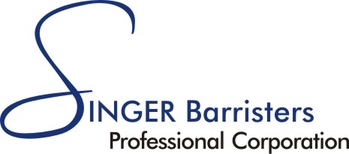People who insurers deem not seriously injured in motor vehicle accidents are finding it increasingly difficult to find lawyers to take on their cases, says Toronto personal injury lawyer Darryl Singer.
Singer knows because he’s one of those lawyers, he says.
“I used to take almost every file that came through my office, but now I probably take one out of every five,” says Singer, principal of Singer Barristers Professional Corporation.
“Five years ago, if someone had a real injury I could put money in the client’s pocket and it would be worth my time and out-of-pocket disbursements. But now, even genuine injuries that are at the lower end of the spectrum are not only not profitable but will costs me money to run. As such I can’t take their file.”
The selective nature of choosing files by most Ontario personal injury lawyers is a result of sweeping changes to Ontario’s no-fault accident benefits system as of April 1, 2016, with all accident benefit disputes now being heard by the Licence Appeal Tribunal (LAT) rather than the Financial Services Commission of Ontario.
The previous system was “loser-pay,” meaning if the injured party was successful at arbitration, the insurance company covered their lawyer’s legal fees. Now, the client must cover all legal fees — leaving little incentive for the lawyer to take on such cases, and leaving clients to either back down or represent themselves against an insurance company’s experienced lawyer.
Additionally, the reduction in benefits means that even if the client wins the case, there simply isn’t enough of an upside to justify the time and cost of disputing the matter through the LAT.
Singer says he is worried about the impact these changes will have on accident victims. He frequently sees people who need legal help but he knows they will have trouble finding it.
“It’s now been several months since these changes came into effect, but the issues aren’t going away, and they will only get worse with every passing day and every accident on the road,” Singer tells AdvocateDaily.com.
The difficulty finding legal representation combined with clawed-back benefits under the Statutory Accident Benefits Schedule (SABS) as of June 1, 2016, have a double-whammy effect for clients he says.
“Now, because of the maximum cap on treatments, many clinics where people would seek treatment with the understanding they would be paid by insurance companies either aren’t in business anymore, or are requiring the client to pay as they go. Even where the insurer is paying for the rehab treatments, the maximums under the SABS simply aren’t sufficient ” he says.
“Insurance companies understood full well that by driving down the benefits, it would correspondingly drive down incentive for paralegals and lawyers to pick up files and make it more difficult for people to get represented and get treatment.”
